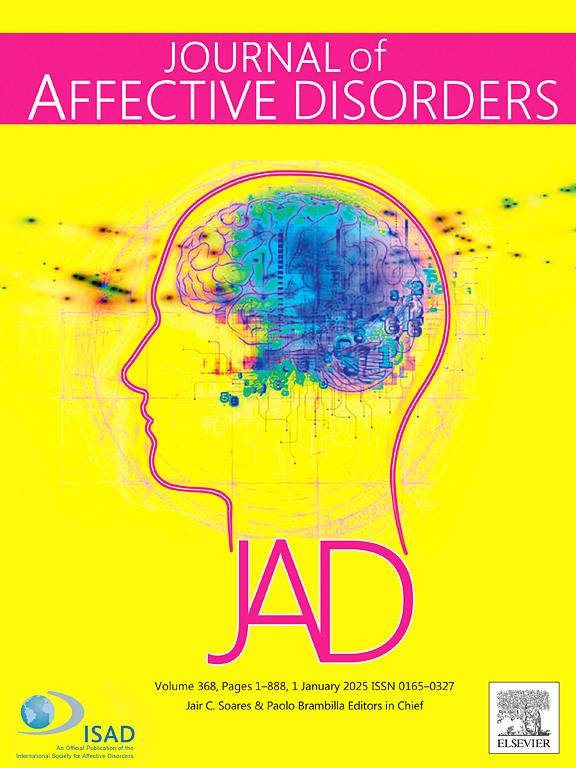Benchmarking empirical severity for the Yale-Brown Obsessive Compulsive Scale-Second Edition
IF 4.9
2区 医学
Q1 CLINICAL NEUROLOGY
引用次数: 0
Abstract
The Yale-Brown Obsessive Compulsive Scale (Y-BOCS) is considered the primary instrument for assessing the presence and severity of obsessive-compulsive disorder (OCD). Conceptual and empirical critiques inspired the development of an updated version of the instrument, the Yale-Brown Obsessive Compulsive Scale-Second Edition (Y-BOCS-II), with a higher ceiling of OCD severity to better differentiate between severe and the most debilitating OCD presentations, among other revisions. The Y-BOCS-II has demonstrated sound psychometric properties across diverse samples. Empirically derived severity benchmarks have been proposed for the original Y-BOCS, yielding somewhat different ranges than what has been commonly used in clinical and research settings, yet severity benchmarks for the Y-BOCS-II have yet to be established. Using a diverse, pooled sample of 2982 children and adults with OCD or obsessive-compulsive and related concerns across 13 countries, receiver-operating characteristic (ROC) analyses yielded severity benchmarks that largely mirrored the original Y-BOCS at the lower range of scores and extended the previously established benchmarks at the higher range of scores, owing to the increased ceiling of the instrument. The optimal benchmark ranges were determined as: non−/sub-clinical (0–14), mild (15–21), moderate (22–34), severe (35–50). Similar benchmarks were present across sex and age groups, and their accuracy was adequate in both a holdout sample and an independent sample of OCD patients from China (n = 78). Limitations and implications for the use of the Y-BOCS-II in clinical and research settings are discussed.
基准经验严重程度的耶鲁-布朗强迫症量表-第二版。
耶鲁-布朗强迫症量表(Y-BOCS)被认为是评估强迫症(OCD)存在和严重程度的主要工具。概念和实证批评启发了该工具更新版本的发展,耶鲁-布朗强迫症量表第二版(Y-BOCS-II),在其他修订中,有更高的强迫症严重程度上限,以更好地区分严重和最衰弱的强迫症表现。Y-BOCS-II在不同样本中表现出良好的心理测量特性。对于最初的Y-BOCS,已经提出了经验推导的严重程度基准,其范围与临床和研究环境中常用的范围有所不同,但Y-BOCS- ii的严重程度基准尚未建立。使用来自13个国家的2982名患有强迫症或强迫症及相关问题的儿童和成人的多样化汇总样本,接受者操作特征(ROC)分析得出了严重程度基准,该基准在较低分数范围内很大程度上反映了原始Y-BOCS,并扩展了先前建立的基准在较高分数范围内,由于该工具的上限增加。最佳基准范围确定为:非/亚临床(0-14)、轻度(15-21)、中度(22-34)、重度(35-50)。类似的基准在不同性别和年龄组中都存在,其准确性在来自中国的强迫症患者的坚持样本和独立样本中都是足够的( = 78)。讨论了在临床和研究环境中使用Y-BOCS-II的限制和影响。
本文章由计算机程序翻译,如有差异,请以英文原文为准。
求助全文
约1分钟内获得全文
求助全文
来源期刊

Journal of affective disorders
医学-精神病学
CiteScore
10.90
自引率
6.10%
发文量
1319
审稿时长
9.3 weeks
期刊介绍:
The Journal of Affective Disorders publishes papers concerned with affective disorders in the widest sense: depression, mania, mood spectrum, emotions and personality, anxiety and stress. It is interdisciplinary and aims to bring together different approaches for a diverse readership. Top quality papers will be accepted dealing with any aspect of affective disorders, including neuroimaging, cognitive neurosciences, genetics, molecular biology, experimental and clinical neurosciences, pharmacology, neuroimmunoendocrinology, intervention and treatment trials.
 求助内容:
求助内容: 应助结果提醒方式:
应助结果提醒方式:


